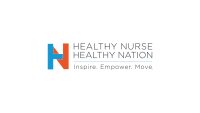The Future of Nursing, a 2-year initiative launched last year by the Institute of Medicine (IOM) and the Robert Wood Johnson Foundation, seeks solutions to the challenges confronting nursing and ways to ensure nurses will play a central role in a reformed healthcare system. Dr. Donna Shalala, PhD, is chairing the committee of experts charged with identifying new approaches to care and solutions to long-standing problems, such as nurse recruitment, retention, and education. Currently President of the University of Miami, Dr. Shalala served 8 years as U.S. Secretary of Health and Human Services under President Clinton.
The committee aims to find ways to meet the growing demand for nurses amid newly envisioned roles, new technology, and empowered teamwork. The initiative’s expected outcome is a transformational report on the future of nursing—no small feat, especially as the sponsors hope the final report will be embraced by nurses, policy makers, state and local government leaders, professional societies, and the public.
American Nurse Today (AMNT) Editor-in-Chief Pamela Cipriano and Publisher Greg Osborne interviewed Dr. Shalala in Philadelphia on December 3, 2009 as she prepared to chair the second national public forum on the Future of Nursing, which focused on community health, public health, primary care, and long-term care. An enthusiastic ally of nursing, Dr. Shalala has a passion for healthcare reform and a deep commitment to improving quality in our healthcare system. She has set the proper context—quality of care—and gathered influential leaders from within and outside the tent. Dynamic yet pragmatic and intellectual, she is unafraid to ruffle feathers. In short, Dr. Shalala is a catalyst for the reinvention of nursing.
AMNT: What is different about the work your committee will produce to shape the future of nursing?
We are in the midst of the first national debate on healthcare reform in a decade, so the context of today’s politics is really important. As you know, I am a big fan of nursing, having worked with schools as well as professionals. So I knew our focus couldn’t be that narrow—it had to extend to healthcare leaders and nursing leaders rather than represent only various interest groups. When we look together at the future of nursing, I see in it opportunities for nursing and improved healthcare quality. I believe this is all about quality and about nursing’s special leadership and operational role in achieving that quality.
AMNT: Nursing hasn’t always enjoyed this level of advocacy in past workforce or other professional issues. What has changed?
We looked at previous reports to be sure we didn’t focus on the worn-out rhetoric that says we just need more nurses and more nursing faculty. The profession has done a lot of work looking at the supply issues. What’s more important is to understand why nursing in the future is so critical to improving the quality of health care in America. During the economic downturn, we’ve seen a temporary easing of the nursing shortage in many communities. However, this nursing workforce change doesn’t address the projected shortfall of up to a half million nurses in just 15 years. So recruitment and retention in the context of healthcare reform may present different issues. We’ve known for a long time that had we changed the role of nurses faster, we might have retained a much larger percentage of nurses in direct care. This is not as true for nursing faculty, because they haven’t gone off to do something else. Faculty preparation requires a different kind of pipeline.
AMNT: You’ve brought together a diverse group of experts to lead the initiative. What are they seeing? Have unexpected challenges and barriers been brought to the forefront of your work?
The committee knows a lot more about the reimbursement side of health care, in both the private and public sectors. They know what the traditional approach is—just reimburse nurses the same as doctors. But the committee isn’t as interested in substituting nurses for doctors as they are in making sure we transform health care with a central leadership role for nurses. We want to deliver health care in different ways.
States such as Pennsylvania and California have begun to implement programs and demonstration projects that create new ways for nurses to practice and enhance access to care—and that challenge the status quo. These changes are not about creating an adversarial role with medical associations; they’re about asking the federal government to take on a stronger role in liberating nurses to play different roles in the healthcare system. States also should take another look at a wide variety of ways to test high-level demonstration projects.
AMNT: We like your choice of the word “liberating.” What does this mean for most nurses?
Future changes should liberate nurses for leadership and operational roles. Our report must be transformational and not just focus on the “usual suspects.”
AMNT: How do we need to change practice in fundamental ways to make that happen?
We need to produce teams. We can’t simply liberate nurses to lead health care in America. Health care will be improved by teams of professionals working together in a patient-centered environment. A key factor will be how to bundle payments to teams; this is something legislators will look at closely once they finish the first round of insurance reform.
AMNT: At the beginning, the initiative tried to separate the discussion on healthcare reform from the discussion on transforming nursing. Are you finding it difficult to keep the two separate? Is there more leverage for changes in nursing now?
I believe there is more leverage right now. Congress is more interested in nursing than state legislatures are. The Senate is dominated by rural senators who’ve had excellent relationships with nurses and know nursing plays an extremely important role in the health care of their communities. They don’t know what the urban guys are fussing about! So in some ways they already see greater possibilities.
AMNT: Have you seen any appetite at the state level for determining who can prescribe during end-of-life care or who can provide independent interventions in the home? It sounds like your committee has begun to have some of those discussions.
We have to recognize that you can go at it with a frontal assault, or you can build a set of economic incentives into the payment system that almost force healthcare professionals to have a very different discussion about how they are going to provide health care.
AMNT: Does that come back to the essence of the team?
Yes, absolutely, and to bundled payments. You can already see it in some interdisciplinary care—oncology, cardiology—where follow-through and seamlessness are absolutely critical to good outcomes. You can see it in the healthcare discussion, which focuses so much on prevention, primary care, chronic care management, and bedside management.
AMNT: Is there something in particular you see as a lever that needs to be flipped to create recognition so nurses are better positioned as care providers in a new system?
We need to look at healthcare systems and the huge initiatives that will take place in primary care, chronic care management, and safety and quality outcomes. We need to make sure nursing is at the center of that discussion and a part of provider networks. We need to get right in the middle of the transformation from the fee-for-service model to bundled payments.
In the end, it’s all going to be about money. It always has been; to pretend it’s anything else is frankly silly. But it’s also going to be about quality and outcomes. We have ideas on how to fund some of those things.
AMNT: When your report and recommendations are in hand, will you have implementation strategies to put on the table as well?
The Robert Wood Johnson Foundation is going to lead the implementation, so this is not going to sit on someone’s shelf. Our report will be specific enough to assign responsibility for implementation to different levels of government and different parts of the healthcare system. It will be pretty pragmatic and specific, naming who has to do what and who can be held accountable.
AMNT: Is there any major stakeholder you worry about—that if that stakeholder doesn’t buy in, it will be problematic?
The American Medical Association has said this project is just about nurses trying to do our jobs, but I want to make sure this is seen as a partnership. I haven’t talked to them yet but I will. I don’t want to make enemies with our report. I want people to see opportunities, and that’s why the context has to be healthcare quality.
Many people are very nervous about healthcare reform. Why anyone in health care should be nervous about it when we are about to put a trillion dollars into it, I have no understanding! The money is going to go mainly to people who provide health care in this country—there’s plenty of room for everyone.
AMNT: When the discussion comes back to money, is there still a fear of moving away from the traditional ways of compensating providers?
Everyone in health care—doctors, nurses, other professionals—knows we can’t live with what we’ve got. So let’s figure out how to put it together in different ways, and mostly how to put it together for the patients. That’s where nursing has an advantage; it has always been patient-centered. Nursing research has been patient-centered, nurses’ work has been patient-centered. That’s why nurses have to be leaders at the table, although not the only leaders.
AMNT: What advice do you have for nurse leaders on how to think and act in the future to assume these leadership roles?
I’m not going to advise them that way. We’re going to try to shape the report and provide a pathway. I recently talked to the leadership of various nursing organizations and told them not to expect the usual suspects with this report—that we’re going to have context to this. They’re pretty excited. I told them we’re going to take a fresh look at their old issues. Some of them they will recognize, some they won’t. It’s not a question of whether they like that or not, or whether they embrace it as a whole. The most important thing is whether we say strategic things that will be helpful as health care is transformed.
AMNT: We agree there’s an excitement in the nursing community and a clear affinity for embracing change.
I think they see some things they recognize in nursing. I look to my vice chair, nurse executive Dr. Linda Burnes Bolton, as my touchstone on this because the initiative could go in a number of different ways. But the nursing leadership in this country has to recognize it’s something they can work with and take from.
AMNT: Have there been any surprises for representatives from other groups, such as hospital or health-plan CEOs?
We have those kinds of people on our panel. They are learning a lot about the things nursing is already doing; I think we all are. They are pretty open people. They like nursing and the nursing profession. They are pretty sophisticated about the overall politics of this
issue. I personally picked some very strong personalities and I want them as drivers of change because they have played in the big time, they like and respect nursing and the profession, but they’ve never had the opportunity to look directly at nursing or to play at the same table except from an operational point of view. Everybody seems to be enjoying it because they are all showing up all the time.
AMNT: What other message would you like to send to the nursing public about the initiative and your hopes for its continued success in the work you’ll be doing over the next year?
I want nurses to know that help is on the way. Clearly you can’t underestimate the importance of the whole healthcare debate—that’s the importance of the timing.
The initiative is tricky because I have a big group and everybody has to participate. I am trying to keep the number of recommendations down to a handful so all of us can recite them very fast. I warned the nursing leadership world that we can’t take on the world.
Note: To follow the progress of the initiative, visit the following websites:


















5 Comments.
We need more CE opportunites and franchises for experienced RNs to set up health care businesses and innovative delivery models of care. I would be interested in contacts with educators who could provide this, or nurses who are doing it already. Many nurses may not be able to take DNP classes or attend business school, but could greatly benefit from business CE opportunities. Please contact me if you know of resources or want to do this, too. Joanne S. Beckman, RN, PhD, at jbeckman@nc.rr.com
Nancy,
Your business sounds very interesting. I think your idea for expanding telehealth and telenursing is excellent. Currently I teach an online DNP class at a major university in the Southeast and the class focuses on teaching NP’s and nurse leaders on how to create new delivery models of health care. The students also learn all the business aspects of setting up their own health care business.
Eileene Shake, DNP, RN, NEA-BC
sorry, i wish i had gone to a 4 yr program when i had the time & my parents financial support- now, hoping to be about 10-12 yrs away from retirement, i don’t have the funds to return for a degree- not that it would make me a better nurse, but in the current climate, the alphabet soup after your RN seems to count for a lot as the years go by-
Hurray for seeking new ways to improve the value of nursing to society! In support here i research highlighting 12 multifaceted NP roles beyond prescribing that demonstrate how the NP is ideally suited for leadership roles in reducing the fragmentation of patient care through expertise in coordination of providers, payors, and family over patient care issues. D.Mahoney & Ladd,E Geriatric Nursing 2010;31:17-27. More than a Prescriber: GNPs Perspectives on Prescribing & Pharmaceutical Marketing.
In regard to “liberating” nursing from current constraints and regulatory barriers — remember to expand the thinking to telehealth and telenursing. For expertise on these issues, contact Dr. Loretta Schlachta-Fairchild, President & CEO of iTeleHealth, Inc. She is nurse with a doctorate, military veteran, and business owner — a true pioneer in the field of telehealth. Contact is lschlachta@itelehealthinc.com